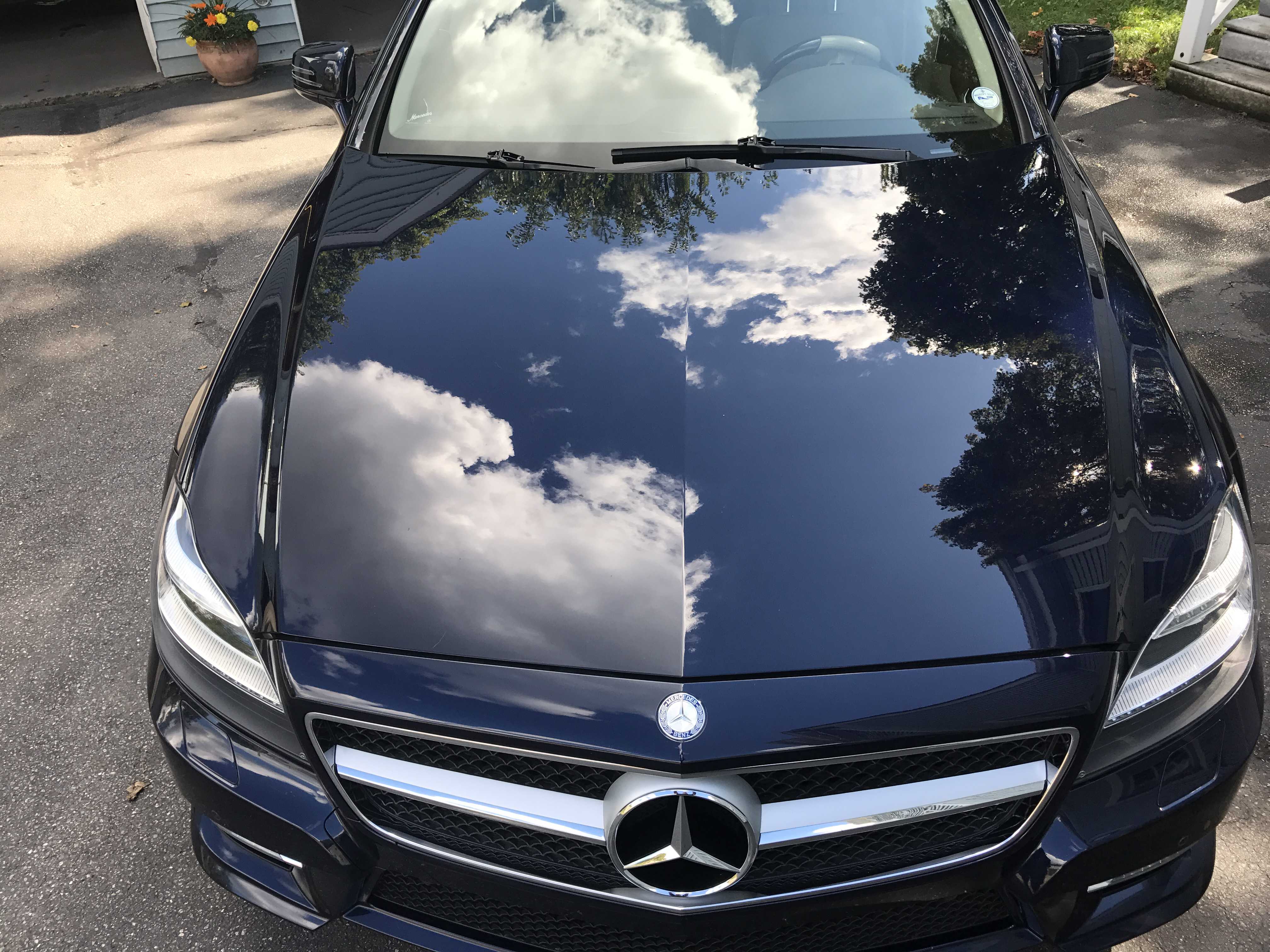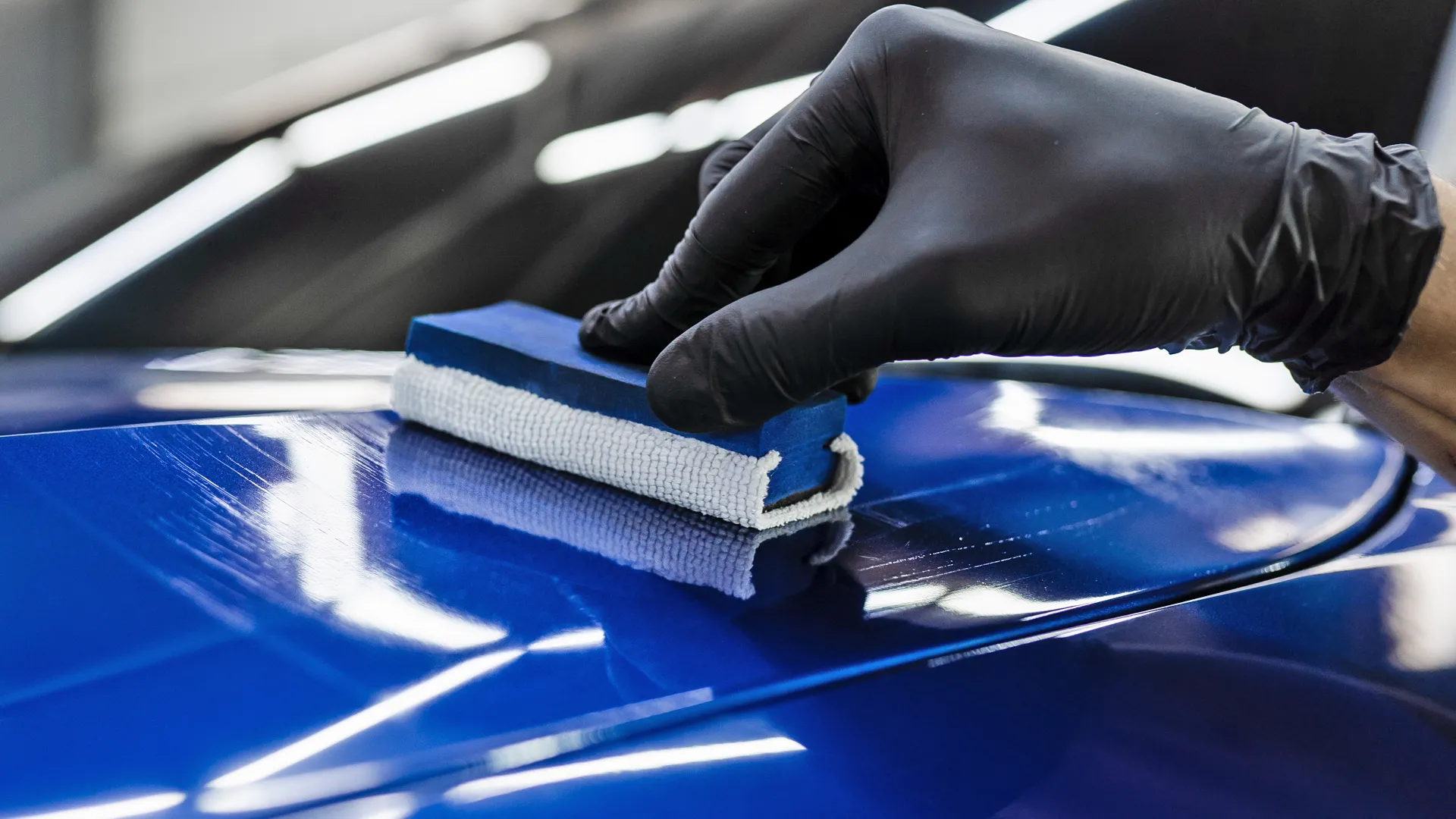Maintain your car’s paint with Ceramic Coating Newark — here’s how
Checking out the Science Behind Car Ceramic Coating and Its Safety Characteristics
The scientific research of car ceramic coating offers an interesting study in innovative vehicle security. Composed mostly of silicon dioxide and polymers, these finishings form a durable bond with lorry paint. This communication boosts sturdiness against environmental dangers while offering hydrophobic benefits. The complexities of exactly how these finishes job and their long-term advantages continue to be less comprehended. Ceramic Coating Newark. Unpacking these information reveals why ceramic layers are ending up being a preferred option for car care
What Is Ceramic Coating?
Ceramic coating is a fluid polymer that chemically bonds to the surface area of an automobile's paint. This innovative safety layer enhances longevity and offers superior resistance to environmental factors. Unlike traditional wax or sealants, which supply short-term security, ceramic coverings produce a lasting guard that can hold up against severe conditions such as UV rays, acidic impurities, and extreme weather. When applied properly, the coating creates a hydrophobic surface area, triggering water to grain and slide off, which aids in preserving the automobile's tidiness. In addition, it uses improved gloss and depth to the paint, making the car show up even more polished and dynamic. The application process usually involves complete surface area prep work, consisting of cleaning and polishing, to ensure peak bonding. Because of this, ceramic finishes are ending up being significantly preferred among car lovers and those seeking to shield their financial investments, assuring to keep the vehicle's aesthetic appeal while lowering the regularity of upkeep.
The Structure of Ceramic Coatings
The detailed formula of ceramic coverings mainly includes silicon dioxide (SiO2), which is stemmed from natural sources like quartz and sand. This essential component provides the structure for the coating's toughness and protective top qualities. Along with SiO2, ceramic finishings typically include numerous polymers and additives that improve adhesion, flexibility, and resistance to ecological factors. These compounds function synergistically to create a robust obstacle against impurities such as dust, chemicals, and UV rays.Furthermore, some formulations incorporate titanium dioxide (TiO2) or other nanomaterials, which can boost the coating's hydrophobic homes, causing better water repellency. The exact structure can differ greatly amongst makers, influencing efficiency and durability. Inevitably, the mix of these aspects finishes in a protective layer that not just boosts the aesthetic allure of lorries but additionally serves to extend their life-span by securing the surface from potential damage.
How Ceramic Coatings Job
Understanding how ceramic coverings work involves exploring their chemical make-up, which adds to their safety high qualities. The application procedure is necessary for accomplishing ideal results, while longevity and sturdiness aspects figure out the coating's efficiency in time. With each other, these aspects highlight the advantages and performance of ceramic finishings for vehicle protection.
Chemical Make-up Explained
While many car owners look for durable security for their lorries, the chemical make-up of ceramic coatings plays an essential function in their performance. These finishes mostly contain silicon dioxide (SiO2), which is stemmed from natural minerals. This compound develops a strong bond with the automobile's paint, producing a long lasting, protective layer. Furthermore, many ceramic finishes consist of titanium dioxide (TiO2), improving their hydrophobic residential or commercial properties and resistance to UV rays. The presence of polysiloxanes can further boost adaptability and toughness. With each other, these elements add to the coating's capability to drive away water, dirt, and contaminants, while likewise providing a high-gloss surface. Understanding this chemical foundation assists car owners appreciate the durable protection provided by ceramic layers.
Application Refine Overview
Using ceramic finishings involves a precise procedure that guarantees optimal bonding and security for the vehicle's surface. Originally, extensive cleaning and purification of the car's exterior are carried out to get rid of dirt, gunk, and previous waxes. This action confirms that the surface area is totally free from impurities that can prevent attachment. Following this, the paint is typically brightened to boost quality and eliminate any type of flaws. When prepared, the ceramic coating is used in small sections using an applicator pad, enabling consistent insurance coverage. The coating is then entrusted to cure, creating a solid chemical bond with the surface. Appropriate curing times and problems are important, as they verify the coating attains its optimum efficiency and protective high qualities.
Longevity and Sturdiness Factors
Ceramic coatings are designed to give resilient protection via their sophisticated chemical structure, which produces a durable obstacle against environmental pollutants. The sturdiness of these coatings is influenced by factors such as the thickness of the application, the quality of the product, and the problems under which the car is exposed. High-quality ceramic coverings can last several years, resisting scrapes, UV rays, and chemical stains. Proper upkeep, including routine cleaning and routine reapplication, can even more improve durability. Additionally, environmental factors like environment and exposure to contaminants can impact the life expectancy of the coating. In general, when used and maintained properly, ceramic layers offer exceptional resilience, making them a popular option for car fanatics looking for to protect their automobile's appearance.
Hydrophobic Characteristics and Water Repellency
Hydrophobic buildings are a trademark of quality car ceramic layers, significantly boosting the automobile's surface performance. These finishes develop a molecular bond with the car's paint, leading to a surface area that pushes back water successfully. When water enters you could check here contact with a ceramic-coated surface area, it grains up and rolls off, reducing the quantity of liquid that remains on the paint. This actions not just adds to an aesthetically pleasing look however additionally lowers the build-up of impurities such as dust, grime, and roadway salts.The boosted water repellency leads to less complicated cleansing and maintenance, as less initiative is required to remove unwanted materials. Furthermore, the hydrophobic nature of ceramic coatings helps in protecting against water spots, which can mar the coating of uncoated surfaces. Generally, the unification of hydrophobic residential properties in ceramic coverings plays an essential role in preserving the lorry's immaculate appearance while simplifying upkeep.
Protection Against Scratches and UV Damages
Car ceramic finishings supply substantial defense against scratches and UV damages. The scratch resistance system produces a resilient layer that soaks up effects, while the UV shielding advantages help maintain the car's paint integrity in time. With each other, these attributes add to a longer-lasting and aesthetically enticing surface.
Scratch Resistance System
Using innovative innovation, ceramic layers provide a robust guard versus scrapes and UV damages, enhancing the long life and look of car surface areas. The scratch resistance mechanism of these coatings is attributed to their special molecular structure, which creates a resilient bond with the automobile's paint. This bond develops a hard, protective layer that can absorb influences and resist abrasions. Additionally, the smooth surface of the coating reduces rubbing, making it tough for pollutants to stick and trigger scratches. The chemical structure of ceramic layers often includes nanoparticles that reinforce the safety layer, more boosting its resilience. Lorries treated with ceramic coverings display considerably boosted scrape resistance contrasted to conventional wax or sealants, making certain an excellent finish over time.
UV Shielding Benefits
The protective top qualities of ceramic finishings extend past scratch resistance to consist of considerable UV protecting benefits. These finishings produce a robust barrier that reflects dangerous ultraviolet rays, guarding the vehicle's paint and underlying products. Extended direct exposure to UV radiation can cause fading, oxidation, and deterioration of the paint surface. By integrating ceramic finishes, automobile proprietors can successfully alleviate these risks, protecting the aesthetic charm and integrity of their automobiles. In addition, the UV blocking homes add to enhanced durability, decreasing the regularity of painting and upkeep. Inevitably, the combination of ceramic finishes uses a detailed solution for securing cars from the harmful results of sunlight exposure, making sure a continual, lively look with time.
The Longevity and Upkeep of Ceramic Coatings

Frequently Asked Concerns
Can Ceramic Coating Be Applied to Any Type Of Sort Of Lorry?
Ceramic coating can be related to different sorts of cars, consisting of autos, vehicles, and motorbikes. go Nevertheless, surface prep work and compatibility with specific materials are crucial for ideal adhesion and efficiency of the coating.
Just How Much Does Ceramic Coating Commonly Cost?
Ceramic coating generally sets you back in between $500 and $2,000, relying on elements such as vehicle dimension, coating high quality, and specialist application. The investment can supply long-lasting security and boost the vehicle's look over time.

Is Expert Application Required for Ideal Outcomes?
The need of expert application often depends upon preferred outcomes. Specialists usually guarantee appropriate surface preparation and application methods, causing suitable bonding and longevity of the coating, which may be challenging for unskilled people to attain.
Can Ceramic Coatings Be Gotten Rid Of or Fixed?
Ceramic finishes can be removed or repaired, though the procedure might call for details solvents or strategies - Ceramic Coating Newark. Appropriate removal is crucial to prevent damage to the underlying surface area, emphasizing the relevance of expert support for perfect outcomes
Just How Does Ceramic Coating Contrast to Traditional Wax?
The contrast in between ceramic coating and standard wax exposes that ceramic finishings provide remarkable sturdiness, improved protection against ecological pollutants, and longer-lasting sparkle, while wax requires more constant application and gives less general resistance to damage.